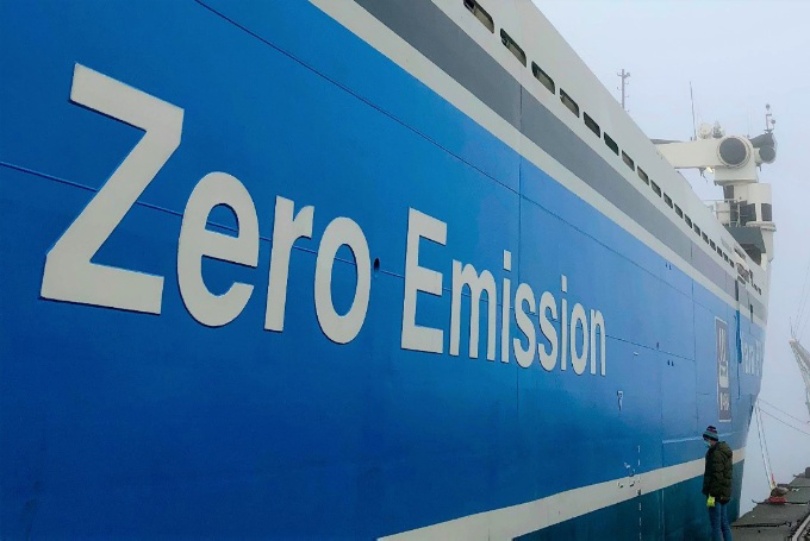by Kim Jefferies, Gard's Special Adviser, Arendal
Posted on: 25 November 2021
International shipping emits 2-3 per cent of global GHG emissions whilst transporting close to 80 per cent of global trade by volume. The IMO target for reduction of GHG emissions from shipping is a 50 per cent reduction from a 2008 baseline by 2050. Many in the industry see this as too little, too late. The International Chamber of Shipping has proposed a net zero target for 2050. Zero -emission fuels and vessels must be deployed at scale over the next decade to achieve carbon neutrality in the shipping segment by 2050. This need is behind the “Green Shipping Corridor” initiative proposed by the Getting to Zero Coalition.
The Getting to Zero Coalition
The Getting to Zero Coalition is a partnership between the Global Maritime Forum, the Friends of Ocean action, and the World Economic Forum. It brings together decision-makers from across the shipping value chain with key stakeholders from the energy sector as well as from governments and intergovernmental organisations. The work will be supported by knowledge partners such as the UCL Energy Institute, Environmental Defense Fund and the Energy Transitions Commission. Gard is one of the more than 150 companies that are current members of the Getting to Zero Coalition as are many of our members and clients.
Green Shipping Corridors
The ambition of the Getting to Zero Coalition is to have commercially viable zero-emissions vessels (ZEVs) operating along deep-sea trade routes by 2030. These will be supported by the necessary infrastructure for scalable net-zero carbon energy sources including production, distribution and bunkering and by 2045, to have 100 per cent of the ships using zero emission fuels.
The proposed green corridors are specific trade routes between major port hubs where zero-emissions solutions can be demonstrated and supported. The Next Wave Green Corridors report suggests that four critical building blocks need to be in place to establish a green corridor:
- Cross-value-chain collaboration: A green corridor requires stakeholders that are committed to decarbonisation and are willing to explore new forms of cross-value-chain collaboration to enable zero-emission shipping from both the demand and supply side.
- A viable fuel pathway: Availability of zero-emission fuels and a bunkering infrastructure to service zero-emission vessels are essential factors.
- Customer demand: Conditions need to be in place to mobilise demand for green shipping and to scale zero-emission shipping in the corridor.
- Policy and regulation: Policy incentives and regulations will be necessary to narrow the cost gap and expedite safety measures.
Feasibility studies have been done on two of the three suggested routes – The Australia-Japan iron ore route and the Asia-Europe container route. The third route – the Northeast Asia – US car carrier route is presented in the report as a case study. The report gives detailed analysis of the potential for various zero emission fuels for each of the routes including ammonia, methanol, hydrogen and synthetic diesel.
The Clydebank Declaration
The Clydebank Declaration signed at COP 26 puts government support firmly behind Green Shipping Corridors. The declaration includes 22 signatory countries: Australia, Belgium, Canada, Chile, Costa Rica, Denmark, Fiji, Finland, France, Germany, Ireland, Italy, Japan, The Marshall Islands, Morocco, Netherlands, New Zealand, Norway, Spain, Sweden, The United Kingdom of Great Britain and Northern Ireland, and the United States of America.
According to the Mission Statement, the signatories aim to support the establishment of at least six green corridors by the middle of this decade. Specifically, the signatories “recognise that a rapid transition in the coming decade to clean maritime fuels, zero-emission vessels, alternative propulsion systems, and the global availability of landside infrastructure to support these, is imperative for the transition to clean shipping.”
The signatories commit to the “formation of an international coalition between ambitious governments, to act together and demonstrate that maritime decarbonisation is possible, while unlocking new business opportunities and socioeconomic benefits for communities across the globe”.
The Next Wave Green Corridors report provides a roadmap and the signatories to the Clydebank Declaration have signaled governmental support including many of the nations selected for the proposed Green Shipping Corridors. This is a positive outcome of COP 26. It is time to move forward to scale up the development of zero emission fuels and vessels.




